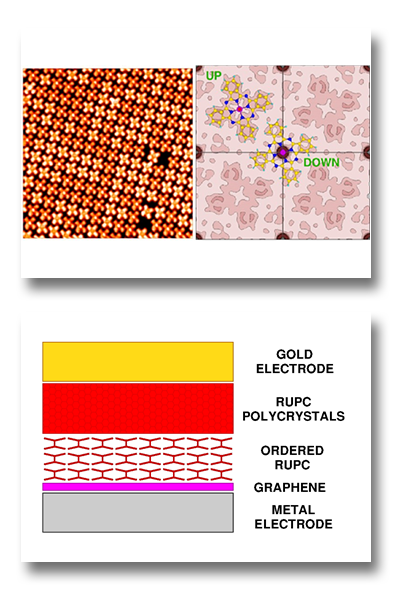ISM activities focus on the realization and sub-molecular characterization of new nanoarchitectures for organic electronics. The future of organic nanomaterials requires flexible molecules, whose reciprocal complex interactions create unexpected order and unpredictable collective phenomena up to the microscale. We use metal-phthalocyanine (M-Pc) molecules to shape inorganic-organic interfaces in which the special properties of such molecules (e.g., switchable isomerism, chirality, magnetism) can be exploited to set up organic thin films deposited on metal or semiconductor substrates having unique optical, magnetic or transport features. Our recent activities include TiO-Pc deposited on silver, where a strong interplay between Ti-O axial dipoles drives the formation of the interfacial layer, and Ru-Pc deposited on graphene-coated metal electrodes, where the formation of highly-conductive molecular pillars can boost charge injection from metal electrodes into the organic semiconductor.
Staff: G. Mattioli, P. Alippi, F. Filippone, R. Larciprete (ISC-CNR) A.M. Paoletti, G. Pennesi, F. Ronci, G. Zanotti, S. Colonna


 English (UK)
English (UK)  Italiano (Italia)
Italiano (Italia)